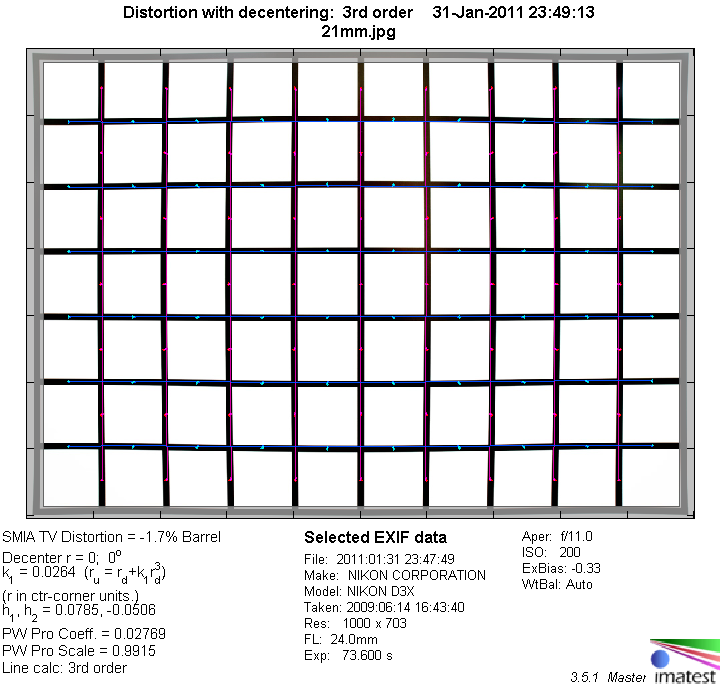|
Zeiss Distagon T* 21mm f/2.8 ZF (FX) - Review / Test Report - Analysis |
|
Lens Reviews -
Nikon / Nikkor (full format)
|
|
Page 2 of 3

Distortion
Ultra-wide lenses are usually a bit "laissez-faire" when it comes to distortion but the Distagon is actually capable of producing a fairly moderate degree of barrel distortion (~1.7%) albeit with a little mustache sub-style. This can lead to slightly irritating results when straight lines are an important part of the subject. See the railway shot in the samples section to get an impression.

The chart above has a real-world size of about 120x80cm.
Vignetting
The Zeiss lens has one weakness - the amount of vignetting is fairly hefty at around 2.0EV at max. aperture. This may be a rather typical value within this class but regarding its ultra-large front element we hoped for a better performance here.
We're performing our vignetting analysis based on
(uncorrected) JPEGs straight from the camera. The JPG engine of the Nikon D3x features a rather flat
gradation curve, thus has a moderate contrast characteristic, resulting in comparatively low vignetting figures - the
corresponding Canon figures are roughly 40% higher due to the more
aggressive default contrast setting.

MTF (resolution)
The resolution of the Zeiss lens is very high straight from f/2.8. The peak quality is reached at f/5.6 but there're only minor quality variations across the tested aperture range actually. The same is true for borders and extreme corners, which show very good resolution at any tested aperture. The best news is the comparatively even quality across the image field.
Please note that the MTF results are not directly comparable across the different systems!
Below is a simplified summary of the formal findings. The chart shows line widths
per picture height (LW/PH) which can be taken as a measure for sharpness.
If you want to know more about the MTF50 figures you may check out the corresponding
Imatest Explanations

Chromatic Aberrations (CAs)
Lateral CAs (chromatic aberrations, color shadows at harsh contrast transitions) are very well controlled at less than 1.2px on the average at the image borders (and even in the corners). This is rather low for such a wide angle lens and pretty much negligible in field conditions.

|